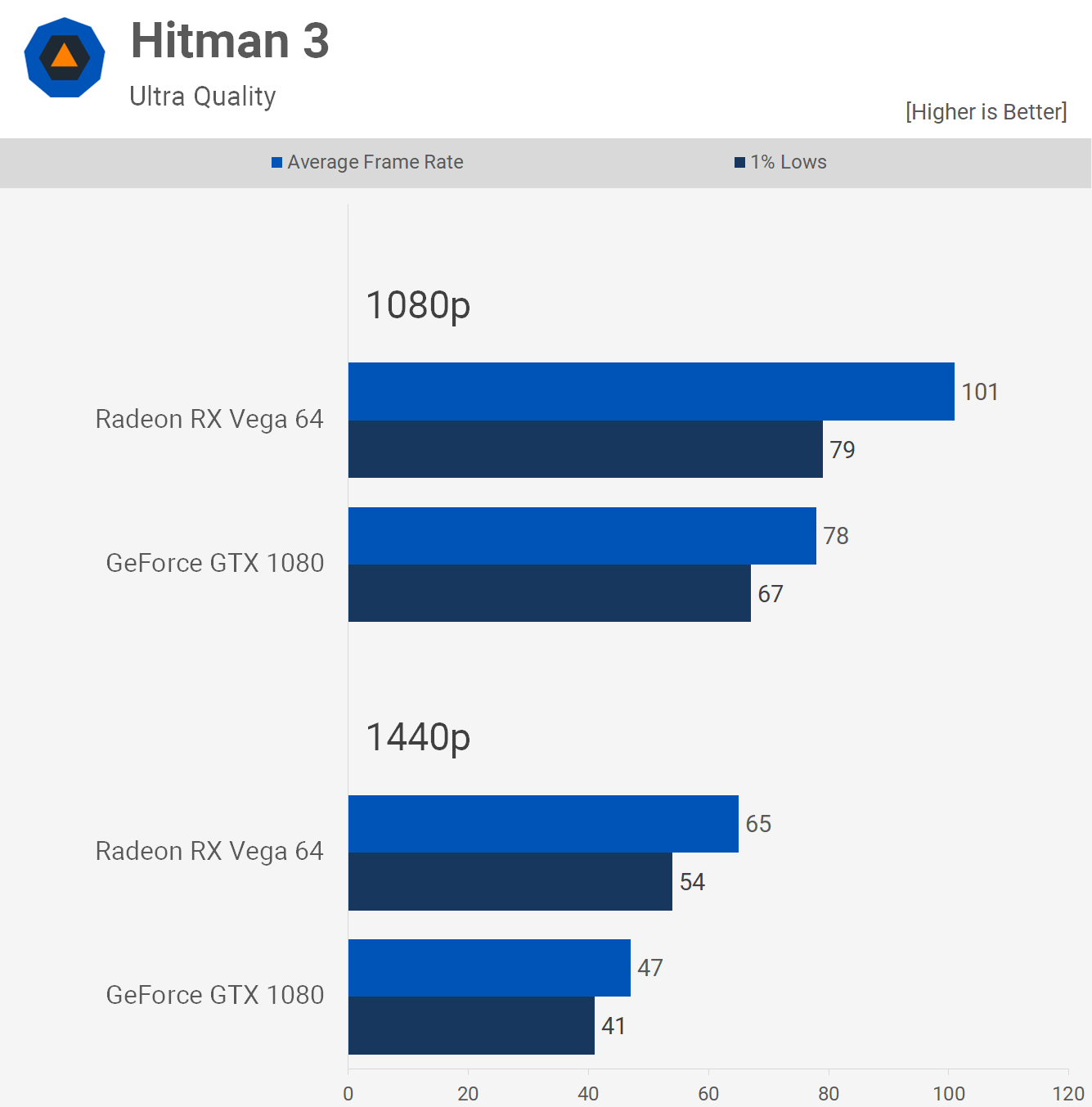
1080 ti fortnite fps
Today we're dusting off our old Radeon Vega 64 graphics card and comparing it with our recently dusted off GeForce GTX 1080, because why not, it could be interesting, so here's what's probably going to be our last big revisit to the Radeon Vega GPU on a 51 game benchmark that includes many modern titles.
We weren't huge fans of the Radeon Vega series, especially Vega 64. It wasn't a terrible product, but in our opinion it was also far from a good one. In a nutshell, Vega 64 arrived a year late to compete with the well established GeForce GTX 1080. It tried to do so at the same price, while generally offering less performance. It also chugged power -- more than an overclocked GTX 1080 Ti.
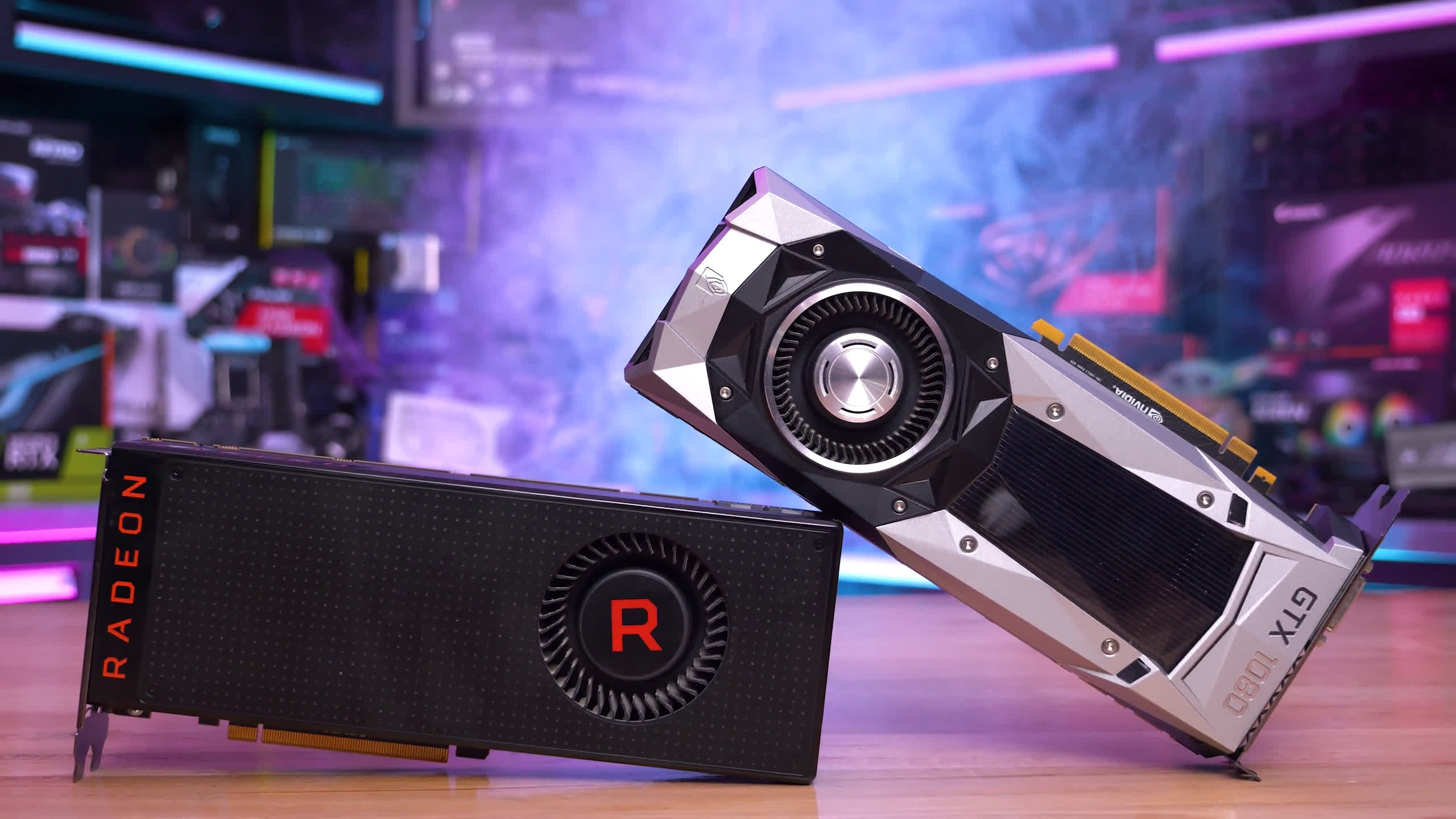
The AMD reference design was also pretty bad. It was hot, loud, and often throttled. There were very few partner models to speak of, and almost none of them were any good.
Meanwhile there were dozens of quality GTX 1080's to pick from and many of them had been readily available for quite some time. As a result, we often recommended the GTX 1080 over Vega 64 and we think time has proven that was the right choice.

We should mention however that there were times when Vega 64 was selling at heavily discounted prices, so if you got one cheap, then it probably worked out nicely for you.
All that aside, AMD Vega 64 is now 5 years old and we haven't revisited it since 2018, so how does it stack up head-to-head with the GTX 1080 in 2022?
We recently saw that the old Pascal GeForce GPU tends to struggle a bit in modern titles, either due to its aging architecture that lacks hardware support for technologies such as async compute, or a lack of driver optimization, which no doubt plays a key role.
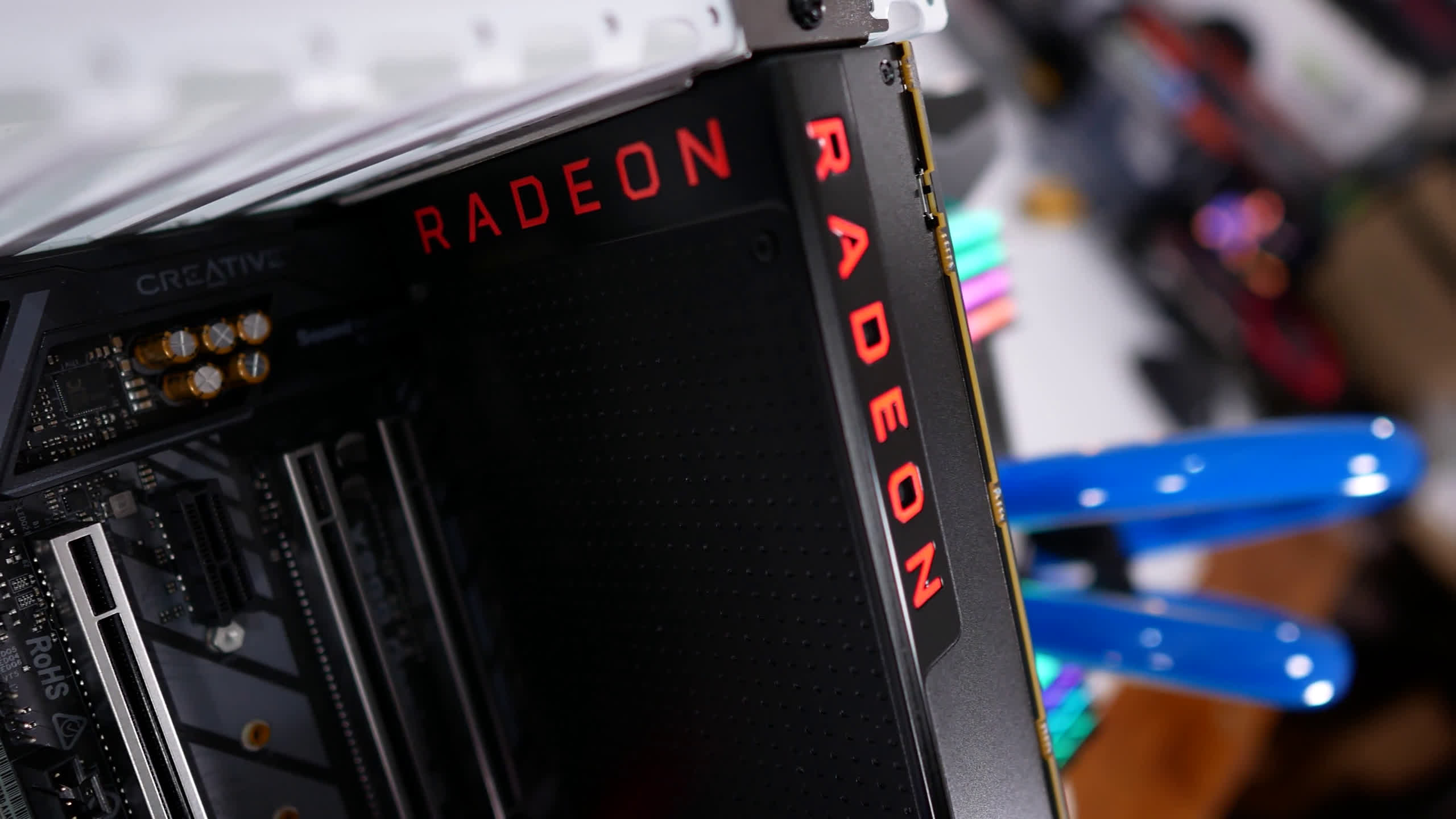
Vega 64 was a more forward-thinking architecture that was more compute heavy, so it should be interesting to see how this match up has turned out half a decade later.
We should note that our 27 game comparison back in 2018 saw the GTX 1080 win this rivalry by a 5% margin at 1440p, so overall performance was similar, but as we've explained, there were other factors at play (or rather, shortcomings) that ultimately saw us go with Nvidia for this battle.
For testing we're using our Ryzen 7 5800X3D test system using 32GB of DDR4-3200 CL14 memory along with the latest available display drivers. Resizable BAR has been enabled for all of the 51 games tested at 1080p and 1440p, and we'll take a close look at the data for about a dozen of the titles tested before jumping into the usual breakdown graphs.
Gaming Benchmarks
First up we have Fortnite and this is an old but also new title as Epic continually updates the game and has recently moved it to Unreal Engine 5. Unfortunately though, the DirectX 12 version of the game is broken, as it suffers from constant stuttering using either AMD or Nvidia GPUs, forcing us to test using DX11.

This is a problem for AMD as their DX11 support in Fortnite has always been a little sketchy, so no surprises here as the the GTX 1080 comfortably beats Vega 64 at 1080p.
The 1440p results are a bit more interesting. If we were to just look at the average frame rate we'd conclude that Vega 64 does better at the higher resolution, but that would be ignoring that 1% lows are still much lower, which does lead to noticeable stuttering for the Radeon GPU in Fortnite.

When we recently compared the Radeon RX 6600 and GTX 1080 in a recent head to head, we noted that the GeForce GPU was heavily underperforming in Hitman, certainly well below where you'd expect it to be.
AMD's Vega 64 doesn't suffer to nearly the same degree and was able to break the 60 fps barrier at 1440p, delivering almost 40% more performance with a 30% boost seen at 1080p. This is a good result for the old Radeon.

Next we have F1 22, a newly released title that supports ray tracing, but of course neither of these older GPUs support it. It's still a new game that will require some level of driver optimization and it appears Nvidia has done a much better job in this instance as the GTX 1080 was 42% faster at 1080p and 19% faster at 1440p.
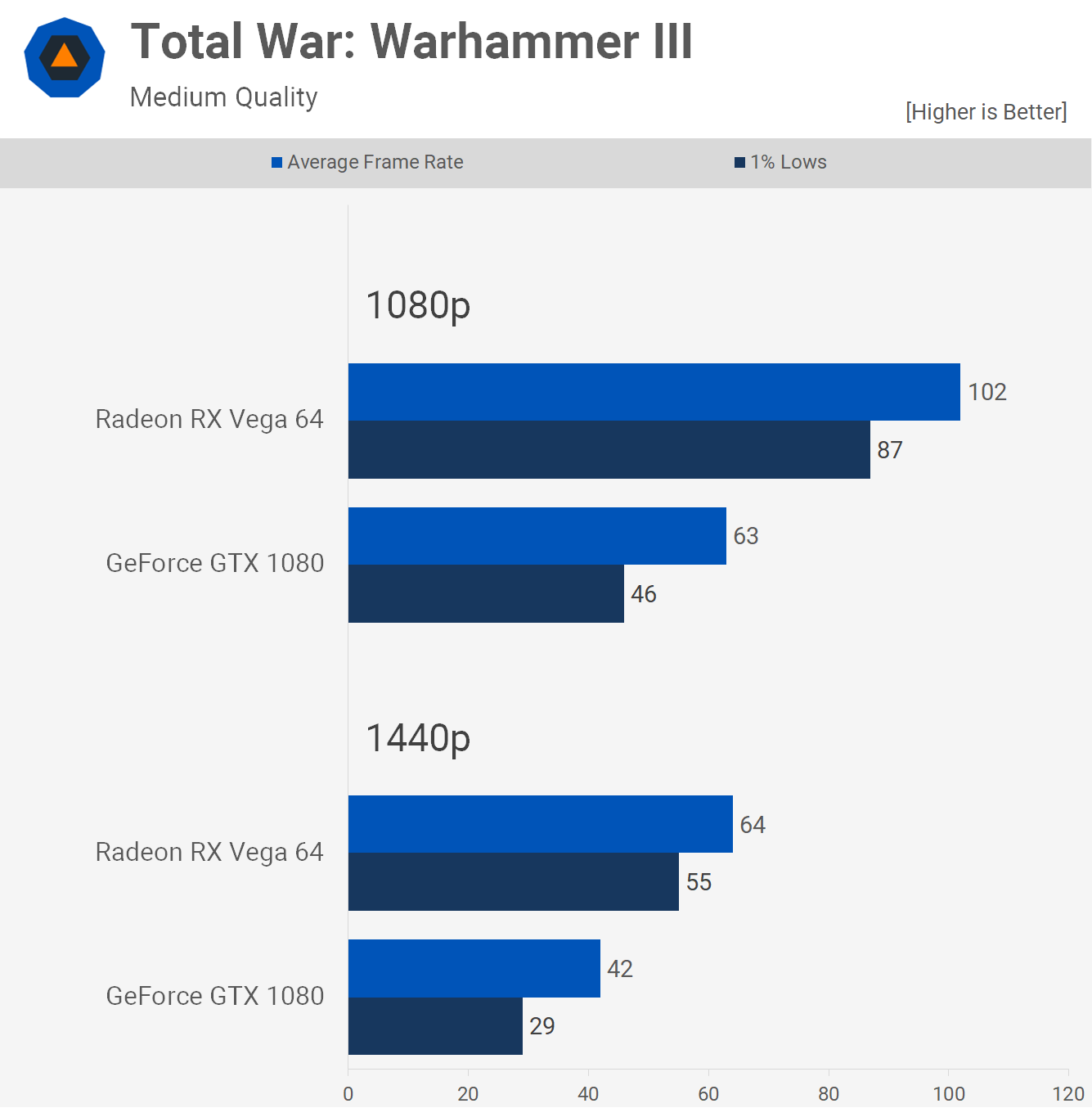
Flipping the results the other way is Warhammer III, using the medium quality preset. Vega 64 was miles faster than the GTX 1080 here, serving up just over 60% more frames at 1080p and a little over 50% more at 1440p. The game played noticeably better with the Radeon, particularly at 1440p.

Moving on to Cyberpunk 2077, we find another title where Vega 64 is able to outpace the GTX 1080, offering 17% better performance at 1080p, and a 24% more at 1440p. Another big win for the Radeon in a modern and very demanding title, though we were forced turn down quality settings to medium for smooth playable performance.
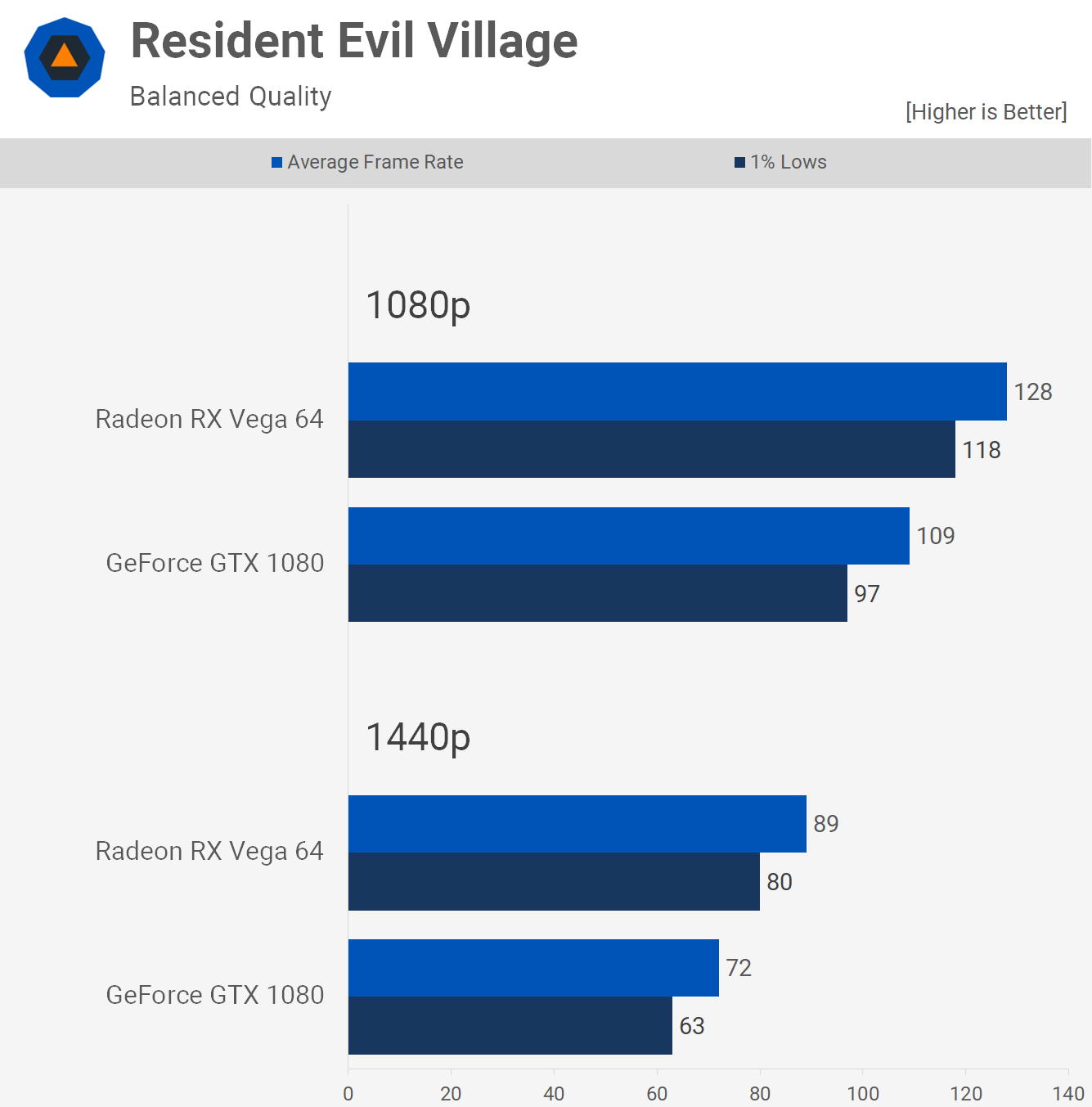
Resident Evil Village is yet another game where Vega was dominant. The GTX 1080 was able to deliver perfectly playable performance with 72 fps on average at 1440p, while Vega 64 was good for an additional 24% frames at the same resolution.
We also saw a strong 17% performance uplift at 1080p, which put the Vega graphics card well into high refresh rate territory.
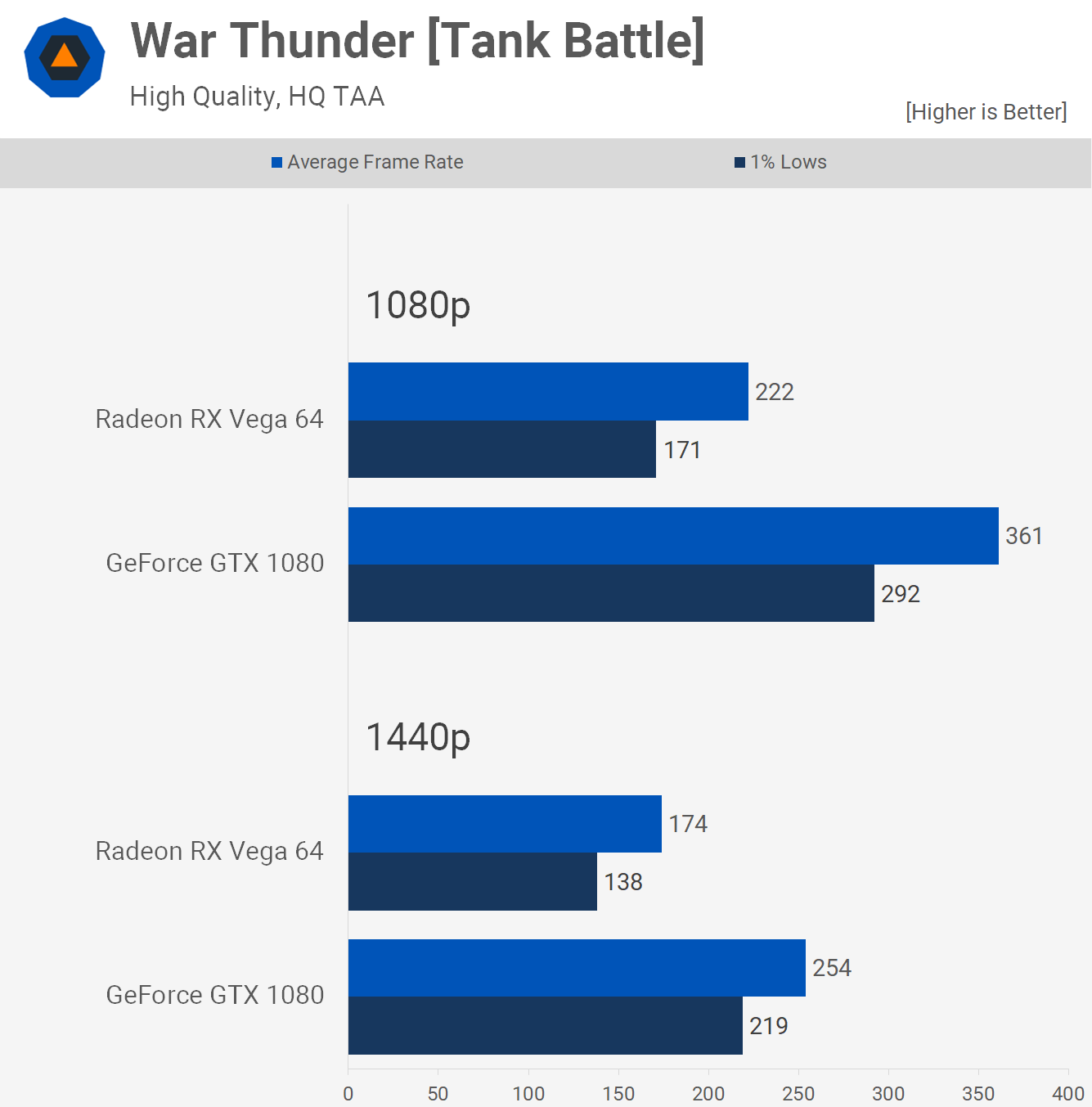
War Thunder is a game that heavily favors the GeForce GTX, and while it's an older game, it's one that plays at significantly higher frame rates with the GTX 1080. For example, the GeForce hit 361 fps at 1080p making it 63% faster than Vega, and we also saw a notable 46% margin at 1440p in favor of the Nvidia graphics card.
Despite getting destroyed in this test, the positive note for AMD is that Vega 64 still managed to deliver an average of 174 fps at 1440p, which we believe is ample for this title.
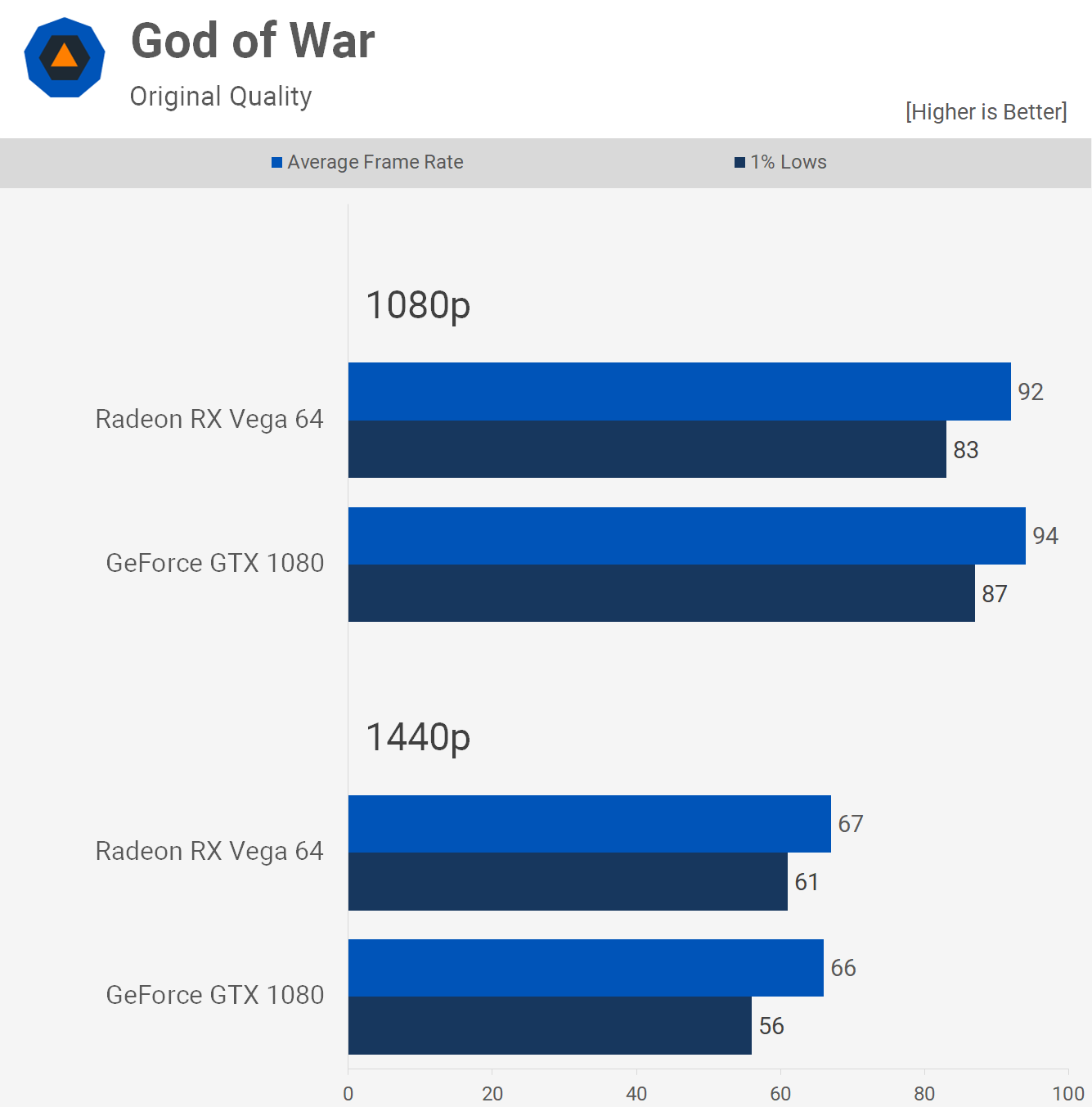
God of War is a new title on PC that appears to play quite well using either Vega 64 or the GTX 1080. Both averaged just over 90 fps at 1080p, with over 60 fps at 1440p, so a good result for both GPUs and it's good to see 5-6 year old products delivering highly playable performance in modern titles using reasonable quality settings.

Vega 64 was jumped back ahead in Red Dead Redemption, hitting just 60 fps at 1080p using high quality settings, though that meant it was 15% faster than the GTX 1080, which managed just 52 fps. The margin remained much the same at 1440p as Vega was 18% faster.

Vega 64 also performed well in Dying Light 2, delivering 67 fps at 1080p to make it 12% faster than the GTX 1080, not bad given it was generally slower than the GeForce GPU back in our 2018 testing.
We're also looking at a 15% performance advantage at 1440p, though neither GPU was particularly impressive here.

The last game we're going to look at is Watch Dogs Legion. Despite being an Nvidia sponsored title, AMD landed another win as Vega 64 pulled ahead by 12% at 1080p and 1440p.
Certainly not a massive margin but convincing enough considering back in the day Vega 64 was typically slower than the GTX 1080.
Performance Summary
Those were some interesting results and it certainly appeared from the 10+ games we just looked at that Vega 64 got the better of the GTX 1080. Of course, we did test 51 games in total, so we shouldn't jump to any conclusions just yet
Let's check out the full breakdowns at 1080p and 1440p…

As suspected, Vega 64 did get the better of the GTX 1080 at 1080p. Although we're talking about a slim 3% margin, which we'd prefer to call a tie, it's not a bad result for AMD as this GPU was at least 5% slower back in 2018.
While the results have been somewhat reversed, the truth is the GTX 1080 and Vega 64 were always evenly matched and that still holds true today. Good news for Vega, but of course, it's too little too late and gamers should avoid both of these GPUs in 2022 as there are simply better second hand deals.
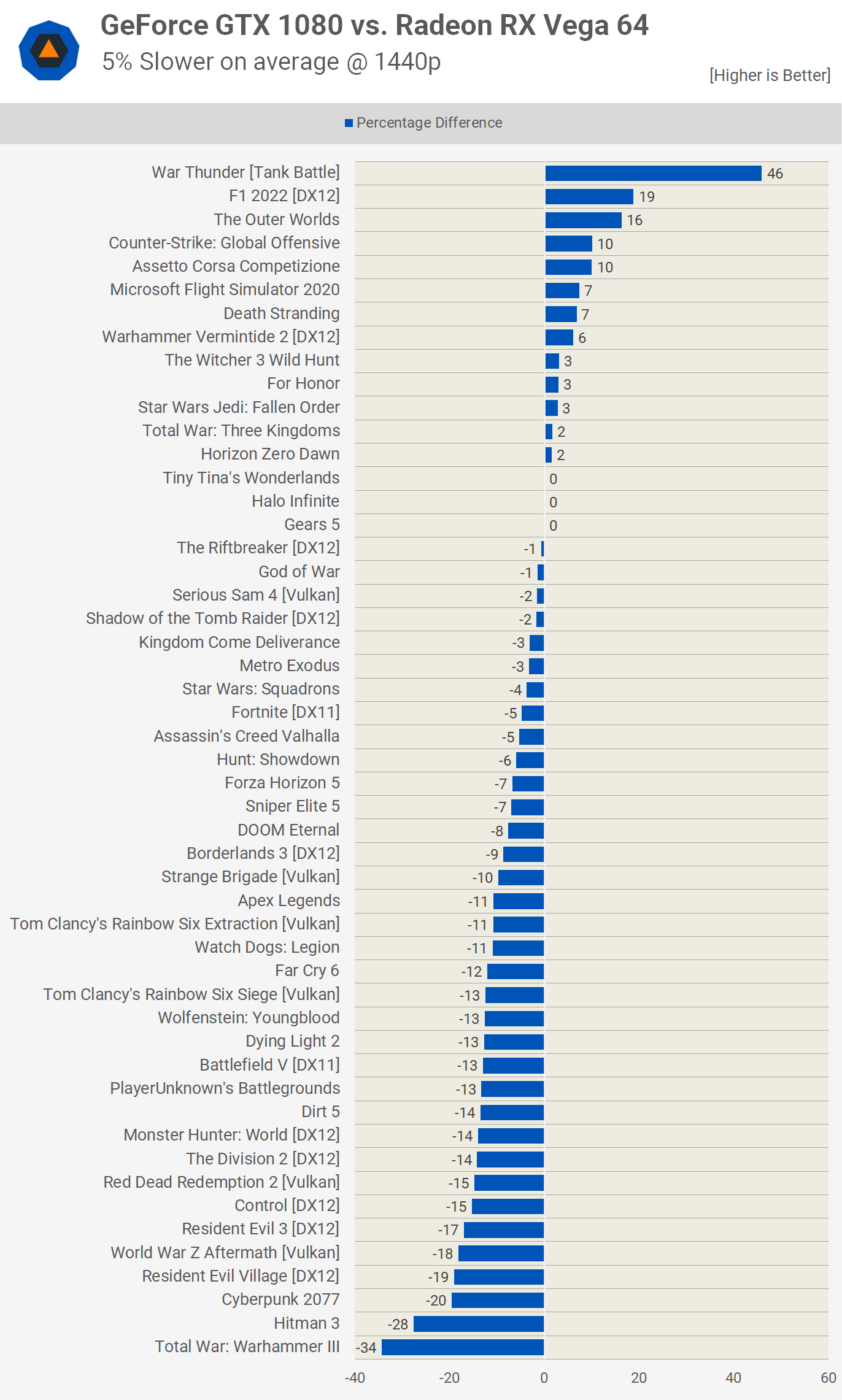
The margins are very similar at 1440p for the most part and now the GeForce GTX 1080 is 5% slower overall. It's interesting to note that back in 2018, Dawn of War III was one of just two titles where Vega 64 could beat the GTX 1080 by double-digit margins, and today Warhammer III is the worst title test for the GeForce GPU. Also in that previous test, we saw 6 games where Vega 64 was faster by 5% or more, whereas the updated 2022 testing found 28 examples (of a larger game sample, of course).
A Blast from Radeon's Past
We always find it interesting to look back at these old battles, not because we can give any useful or relevant consumer advice as these products are now too old for that, but because we actually get to see how it all played out. Many gamers who haven't upgraded in the past few years are likely still running one of these cards, too.
AMD's Vega GPU range never impressed us much. Vega 56 was decent, Vega 64 was just too inefficient, and the liquid cooled version was too expensive. Many AMD fans back in the day would argue Vega's case, claiming undervolting fixed the efficiency issues and that the more "future proof" architecture would eventually reign supreme.

The undervolting thing was largely hit-and-miss on our testing, but they were technically right; the Vega or GCN 5th generation architecture was set to stand the test of time better, however irrelevant that point might be 5 years later.
The real shame is that it took 4+ years before Vega was truly competitive and while we just acknowledged that the overall margins haven't changed much, there are several examples where Vega 64 was massively faster such as Warhammer III, Hitman 3, Cyberpunk 2077, Resident Evil Village and another half a dozen titles.
Back in 2018 the only big win we could find for Vega was DiRT 4 when using CMAA, other than that performance was very similar or swung heavily in favor of the GTX 1080.

Looking back, we think that for Vega 64 to be a true GTX 1080 competitor at the same $500 price point it would have needed to be at least 10-15% faster. We say this because there's nothing that could be done about the massive power usage. Also if there had been a wider range of high quality boards to choose from, that would have helped Vega's case, but there wasn't.
There's no question in our mind, for those paying MSRP pricing around 2017 and 2018 -- prior to the release of Nvidia's Turing generation (RTX 20 series) -- the GTX 1080 was the better buy. Since then Radeon GPUs have become significantly more competitive and we're excited to see what the upcoming GPU battle has in store for us. Hopefully we'll have some answers for you before year's end.
Shopping Shortcuts:
- GeForce RTX 3070 Ti on Amazon
- GeForce RTX 3080 on Amazon
- Radeon RX 6800 on Amazon
- Radeon RX 6600 XT on Amazon
- GeForce RTX 3060 on Amazon
- Intel Core i5-12600K on Amazon
- Intel Core i7-12700K on Amazon
- AMD Ryzen 7 5800X on Amazon
- AMD Ryzen 9 5900X on Amazon
